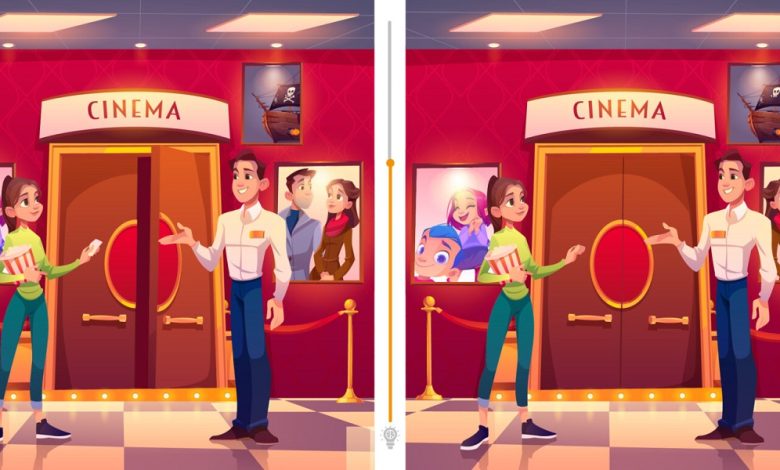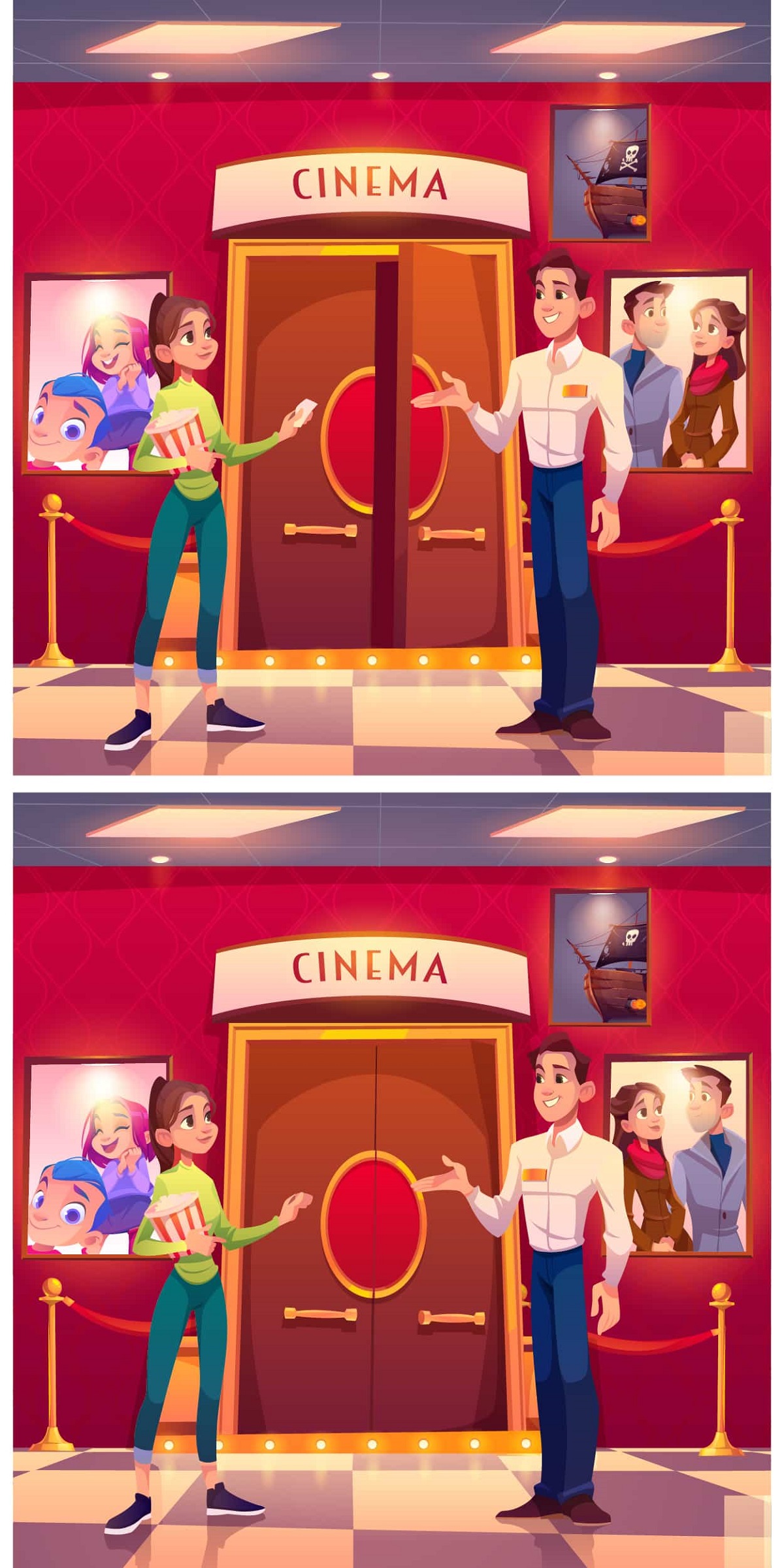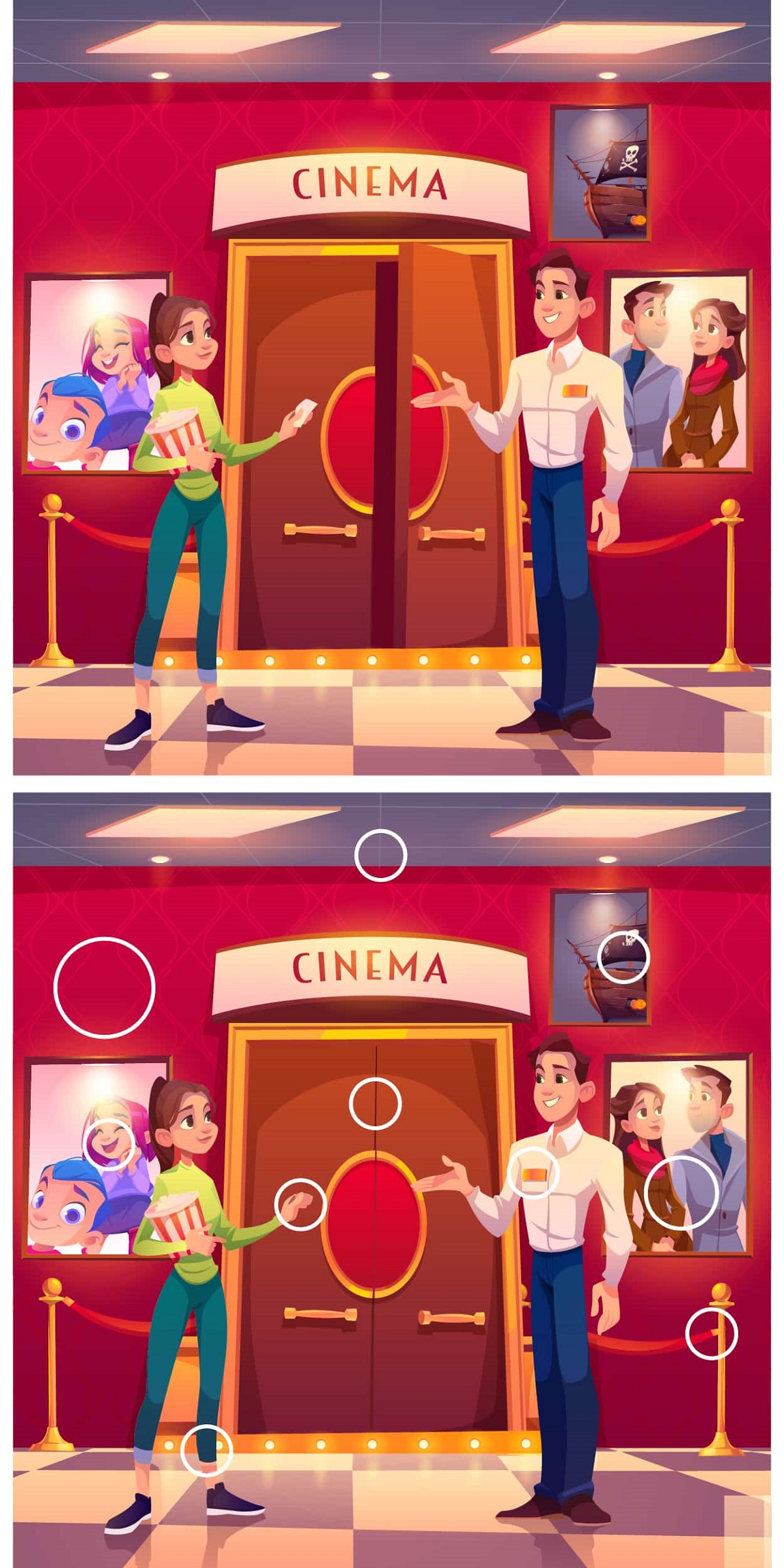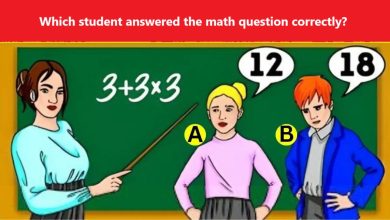Challenge Of Movie Theater: Spot 10 Differences In A Movie Theater Couple Scene In Less Than 40 Seconds!

Challenge Of Movie Theater: Today’s game is a fantastic way to test your visual skills and stimulate your brain. The challenge is to find 10 differences between two images showing a couple in a movie theater, all within 40 seconds.
This fun activity not only entertains but also helps improve your focus and memory.

The Power Of Visual Tests
Challenge Of Movie Theater, Visual tests are incredibly useful tools for assessing an individual’s perception skills and observation accuracy. They require keen attention to detail and the ability to differentiate between similar elements.
These tests can range from very simple to highly complex, depending on the level of detail you want to challenge yourself with. They’re often used to evaluate children’s ability to recognize specific shapes or colors, but they can also be an enjoyable activity for all ages.
Challenge Of Movie Theater, This particular game is perfect for adults too, offering a chance to have fun while sharpening visual skills. As you engage with this challenge, enjoy the process!
Take On The Challenge Of Movie Theater
Challenge Of Movie Theater, Do you enjoy visual puzzles? Looking to test your speed and precision? Then look no further—you’ve come to the right place! This visual challenge is designed just for you.
Your goal is to focus and identify at least 10 differences between the two images above. While the images look almost identical, the challenge lies in spotting the subtle differences—and you only have 40 seconds to do it! Think you’ve got sharp eyes? Then take on this challenge and aim for victory!
How To Approach The Challenge
Challenge Of Movie Theater, You’re about to take on a visual challenge. Your mission is to find the 10 differences in this movie theater scene in less than 40 seconds. It won’t be easy, but with concentration and sharp observation, you can do it.
Take your time to carefully examine every detail. Pay close attention to colors, shapes, and sizes to spot the subtle differences between the images. Stay mindful of the little things you might otherwise overlook.
Challenge Of Movie Theater, Once you’ve found each difference, double-check that you’ve spotted all 10 before you submit your answer. Are you ready? Let’s get started!
Solution To The Visual Challenge
Challenge Of Movie Theater, Congratulations to everyone who successfully found the 10 differences between the images in less than 40 seconds!

For those who didn’t manage it this time, don’t worry—we’ve prepared an image with some helpful indications to show you where the differences are. Once you’ve reviewed it, you can try again, and maybe this time, you’ll find all 10 differences!
Keep Improving Your Skills
Challenge Of Movie Theater, To boost your concentration and observation skills, we encourage you to regularly engage in games like this one. They’re great for keeping your mind sharp and focused. Take on the challenge and share it with your friends on social media!
We’re a young media team, and we need your support. Help us grow by sharing this article on your social networks—you’ll be supporting our small but passionate team!
You can always view and study more brain teaser, intellectual games, puzzles and personality tests in the entertainment section of Chashmak Website. Share them with your friends if you like. Especially those who are interested knowing themselves better and having fun. Follow us on Instagram and Facebook and share your comments and suggestions.
Benefits Of Optical Illusions
Entertaining And Fun
First of all, optical illusions can be fun. This can reduce stress, improve your mood and enhance relaxation.
Exercising The Brain
Research has shown that by exercising the brain, neural pathways are maintained, or enhanced. Such brain exercise can help to improve student alertness and performance on exams. There are therapeutic benefits to people with developmental disabilities as a brain therapy. There also is research indicating that symptoms of dementia or Alzheimer’s disease may be reduced and regression slowed through brain exercises. Optical illusions also can challenge our perceptions and cognitive abilities, helping to improve our mental acuity and cognitive flexibility.
Therapy
They can be used therapeutically to help people with certain conditions, such as amblyopia (lazy eye), to improve their visual perception.
Given these benefits of visual illusions, what are the detriments? Some people may experience dizziness or eye strain, but the most common disadvantage is just frustration. After all, sometimes it can be tricky to find the illusion or hidden image.
Overall, optical illusions can be a fun way to engage with our visual perception and enhance our cognitive abilities.
Also Read:




